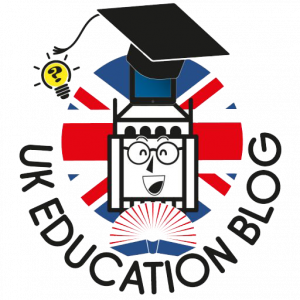In today’s rapidly evolving educational landscape, the traditional approaches to teaching and learning are being questioned more than ever before.
With the overwhelming amount of information available and the increasing demands of learners, many students, especially those who struggle with traditional methods, are being left behind.
Educators are searching for more effective strategies to engage these learners, helping them build the critical thinking, research, and problem-solving skills they need to thrive in the 21st century.
One promising approach that has garnered attention in recent years is Guided Inquiry Design® (GID), an innovative instructional model designed to support all students, particularly those who face challenges in traditional learning environments.
This blog explores how GID is revolutionizing the way educators approach learning and why it’s a game-changer for struggling learners.
What Is Inquiry-Based Learning?

Before delving into the specifics of Guided Inquiry Design®, it’s important to understand the foundation upon which it’s built: inquiry-based learning. But what is inquiry-based learning, and how does it differ from conventional methods?
Inquiry-based learning is an educational approach that emphasizes the student’s role in the learning process. Instead of passively receiving information from the teacher, students actively seek out answers by asking questions, exploring various resources, and constructing their understanding. This model shifts the focus from rote memorization to investigation, problem-solving, and critical thinking.
In a classroom that employs inquiry-based learning, students engage in research, exploration, and experimentation. They are encouraged to question assumptions, analyze information, and draw conclusions based on evidence. This method not only helps students deepen their understanding of a subject but also fosters a sense of ownership and motivation in their learning journey.
While inquiry-based learning has shown benefits across all student populations, its impact on struggling learners is particularly noteworthy. For these students, traditional methods that rely on lectures and textbook reading can feel isolating and overwhelming. Inquiry-based learning offers a more hands-on, student-centered approach that taps into their curiosity and natural desire to explore, making learning more engaging and accessible.
The Struggles of Traditional Learning for Certain Learners
In many classrooms, traditional methods of instruction can leave struggling learners feeling disconnected, frustrated, or even defeated. For some students, the rigid structure of lectures, note-taking, and textbook-based assignments fail to engage them fully, often resulting in a lack of motivation and poor academic performance.
Struggling learners may also have difficulty with:
- Processing large amounts of information presented all at once.
- Connecting new knowledge to their existing understanding.
- Finding relevance in the material being taught.
- Organizing and applying knowledge in a meaningful way.
These challenges can create a vicious cycle where students fall further behind and become increasingly disengaged. The one-size-fits-all approach of traditional teaching doesn’t address the diverse needs of learners, particularly those who require more support, different learning styles, or differentiated instruction.
This is where Guided Inquiry Design® steps in as a game-changer, especially for struggling learners.
What is Guided Inquiry Design®?

Guided Inquiry Design® is a fluid, flexible instructional model that helps teachers guide students through the process of discovery and learning. Rooted in decades of research on how students learn and use information, GID equips educators with the tools they need to create a student-centered, inquiry-based learning environment that is adaptable to the needs of all learners, including those who struggle in traditional settings.
At its core, GID involves guiding students through a structured yet flexible process in which they ask questions, explore various sources of information, make sense of what they find, and apply their newfound knowledge in meaningful ways. This process is not about simply finding the “right” answer but about developing the skills necessary to learn and make informed decisions in a complex world.
In fact, GID’s structured framework is intentionally designed to help students who may need extra guidance, providing the scaffolding needed for them to engage fully with the material and take ownership of their learning. With the teacher as a guide and facilitator, students can navigate the often-overwhelming sea of information, making connections and building knowledge in a way that feels manageable and personalised.
Why GID Works for Struggling Learners
For students who struggle in traditional classroom environments, GID offers several advantages:
- Structured Flexibility: The GID process provides structure and guidance while still allowing flexibility in how students approach their learning. For struggling learners, this balance is crucial, as it offers the necessary scaffolding to help them stay on track while also giving them the freedom to explore topics in ways that suit their learning styles.
- Differentiated Instruction: One of the key principles of GID is its adaptability to meet the needs of diverse learners. By allowing students to engage in inquiry at their own pace and in ways that make sense to them, GID inherently provides differentiated instruction. This is especially important for struggling learners who may need more time, support, or alternative methods to grasp key concepts.
- Collaboration and Community: GID promotes collaboration and social interaction among students, encouraging them to learn from one another in a community setting. For students who may feel isolated or overwhelmed by independent work, this collaborative environment can be empowering, helping them build confidence and communication skills.
- Critical Thinking and Problem-Solving Skills: Rather than focusing on memorizing facts, GID emphasizes the development of critical thinking and problem-solving skills. Struggling learners benefit from this approach because it helps them connect new knowledge to real-world situations, making the learning process more meaningful and relevant.
- Engagement Through Inquiry: GID taps into students’ natural curiosity and desire to explore. For struggling learners who often feel disconnected from the material, inquiry-based learning provides an entry point that is both engaging and empowering. The process of asking questions, seeking answers, and applying knowledge in meaningful ways encourages deeper learning and fosters a sense of achievement.
A Practical Example of GID in Action

Consider a classroom where students are learning about environmental conservation. Instead of assigning a standard research paper or lecture, the teacher uses GID to guide students through an inquiry-based exploration of the topic. Students begin by brainstorming questions they have about conservation, such as “What are the most effective ways to reduce plastic waste?” or “How can individuals make a difference in climate change?”
From there, students are guided through a series of phases, including:
- Immersion: Exploring background information to build context.
- Exploration: Seeking out various sources of information.
- Identification: Narrowing down the focus to a specific research question.
- Gathering Information: Using multiple sources to answer the question.
- Creating: Synthesizing the information into a final project (e.g., a presentation or report).
- Sharing and Reflecting: Presenting their findings to the class and reflecting on what they’ve learned.
Through this process, struggling learners are supported every step of the way, with opportunities for collaboration, hands-on learning, and individualized support.
Conclusion: Changing the Narrative for Struggling Learners
Guided Inquiry Design® represents a new frontier in education for struggling learners, offering a flexible, student-centered approach that engages students in meaningful inquiry while providing the support they need to succeed. By harnessing the power of inquiry-based learning, GID equips learners with the skills necessary to navigate a world rich in information, helping them develop the critical thinking, problem-solving, and research skills needed for lifelong learning.
As educators continue to seek new ways to support all students, particularly those who struggle in traditional environments, the potential of GID to transform teaching and learning is becoming increasingly clear. With its focus on discovery, collaboration, and critical thinking, GID offers a fresh and effective way to help every learner succeed.
This advancement in education could well be the key to unlocking the potential of struggling learners and guiding them toward academic success in today’s world.
Author Profile

- Shirley Owen is a blogger and writer who enjoys writing blogs on education, technology and general news. An avid reader, she follows all the latest news & developments to report on them through her articles.
Latest entries
 learningDecember 22, 2025When Co-parenting Affects School Performance – Challenges & Solutions
learningDecember 22, 2025When Co-parenting Affects School Performance – Challenges & Solutions educationDecember 11, 2025Making Education Accessible for Mobile Families that Travel
educationDecember 11, 2025Making Education Accessible for Mobile Families that Travel learningOctober 28, 20257 Daily Classroom Strategies Helping Children With Learning Differences Thrive
learningOctober 28, 20257 Daily Classroom Strategies Helping Children With Learning Differences Thrive  ed techSeptember 29, 2025How to use VR to Ace your next Exams
ed techSeptember 29, 2025How to use VR to Ace your next Exams





